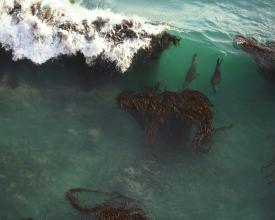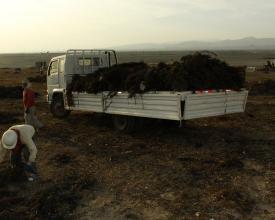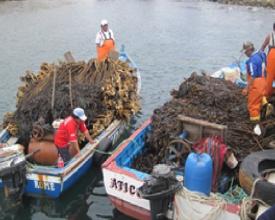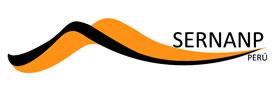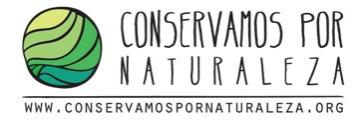
Participatory Marine Protected Area Management
Full Solution
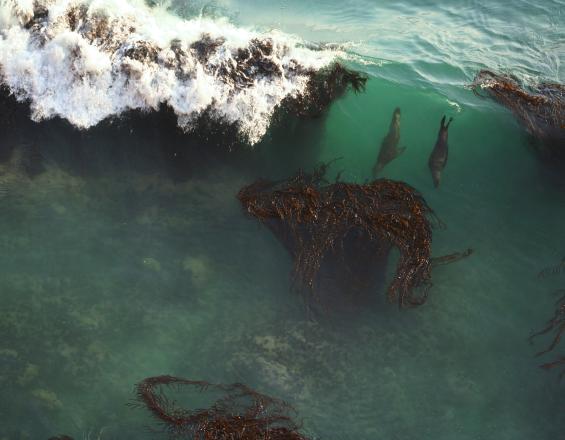
Sea lions surfing in San Fernando Natural Reserve
Bruno Monteferri, Conservamos.org
The local fishermen of Marcona (Ica, Peru), who benefit from the marine resources of San Fernando Cove (Ensenada de San Fernando), were engaged in participatory processes to create and categorize a National Reserve. The fishermen are active partners in current management through the Management Committee of the National Reserve of San Fernando.
Last update: 24 Sep 2025
4962 Views
Context
Challenges addressed
natural resource use conflicts and limited involvement of local people
Lack of involvement of local people in the establishment and management of marine protected areas results in natural resource use conflicts. Contributing factors include inadequate communication schemes and dialogues between marine protected area management authorities and local fishermen who use natural resources, specifically macroalgae.
Location
Marcona, Peru
South America
Process
Summary of the process
Creating appropriate dialogue between fishermen groups and PA authorities has been made possible thanks to: i) the fact that the local fishermen already had a strong Association, exerting good leadership and ii) that citizen participation is considered a basic condition in protected area management in Peru. Having the Fishermen’s Association play an important role as Presidents of the Management Committee gave legitimacy and recognition to this group as an important stakeholder, and at the same time has enabled more democratic decisions because they also need to consider other stakeholders’ views and positions. Today, the formalization of co-management through the management committee allows the Fishermen’s Association to feel recognized and involved in management decisions and provides a space for the protected area authority to carry out consultations and negotiations while considering the diversity of interests that prevail in the area. Recognizing macroalgae harvesting rights and assigning harvesting areas to each group, based on the previous agreements within the Fishermen’s Association, was key for determining mutual rights and responsibilities for the use of marine resources and surveillance and enforcement activities.
Building Blocks
Dialogue between fishermen groups and MPA officials
When the region was set to be designated as a Reserve Zone, a Fishermen’s Association united 16 fisheries groups that had been using marine resources in the area for decades. To reduce conflicts between local people and the protected area authority, it was made clear that pre-existing rights, such as the fishermen’s, would be respected. In the technical document presented to the government for the declaration of the Reserved Zone, it was clearly stated that groups organized through the fishermen’s association historically used the area’s marine resources.
During the Reserve Zone categorization process, the government defines the final category and extent of the protected area based on conservation objectives and imposes natural resource use restrictions. In principle, this is when local participation, dialogue and scientific data have to be considered to decide the future management scheme of the protected area. Several meetings were held with each of the fishermen groups and their association to explain the different protected area categories provided by the legal system. Thanks to the participatory process, San Fernando was declared as a National Reserve and the local fishermen felt involved and heard in the process.
Enabling factors
The vision and commitment of people involved and leading the dialogue process remained consistent, which built trust in relationships among those involved. In case the people in charge change, previous agreements must be respected and it becomes particularly important to have them written down.
Lesson learned
The processes of establishing, categorizing and zoning the San Fernando Reserved Zone shows that participatory processes take longer but lead to more legitimate agreements which are more respected by those who participated in the process.
It is important to record agreements, taking minutes of the meetings and if possible of the positions of the different parties, in order to document consistency of the different actors’ positions.
Discussions and negotiations of complex issues must take place at appropriate locations. A General Assembly open to the public is ideal for generating a sense of openness and to disseminate general information. Ideally, preparatory meetings are held prior to the Assembly, with the representatives of the associations so they have advance information and their positions are known to each other.
Do not create expectations that cannot be met. Be transparent with information.
Management committee
The national authority begins the process to create a protected area management committee by inviting interested local stakeholders. Members are registered, and a council and a President are elected by the General Assembly. The management committee itself becomes a space for dialogue and allows issues to be discussed before tensions turn into conflicts. It also facilitates support from local stakeholders to the protected area management authority to carry out specific activities. The Fishermen’s Association and collectives are also members of the management committee and are active in the general assembly. A representative from the Fishermen’s Association was elected as President of the Management Committee, legitimizing the association as one of the most powerful and relevant actors in the protected area. This made communications between fishermen and government authorities more fluid and management decisions are made based on formal processes.
Enabling factors
The management committee is a legally established by the National Law for Natural Protected Areas and its Regulations.
The National Protected Area Authority promotes the creation of management committees for all protected areas as a way to create a space for dialogue and involve local stakeholders in management decisions.
Lesson learned
The creation of the management committee gave the fishermen confidence that they would have a formal space to have their voices heard. It was also a space to resolve tensions and hear other perspectives. By assuming the Presidency of the Management Committee, the Fishermen’s Association was empowered, but at the same time they had to consider views and decisions that could be against their own. Therefore, more democratic decisions were reached.
Legal resource use rights
When the National Reserve was classified, it was clearly stated that fishermen rights to use marine resources in the protected area would be upheld. Recognizing their rights from the beginning set the basis for positive interaction. Previous arrangements in Peru were key to implementing a similar scenario in San Fernando, where legal resource use rights were assigned to local management groups to carry out sustainable use activities if the groups commit to providing support in surveillance and enforcement. Moreover, the strong organization of the Fishermen’s Association was vital for the designation of specific areas where each fishermen group is allowed to harvest macroalgae. Decisions previously taken by the Fishermen’s Association were legitimized by the protected area authority. Today, fishermen groups continue to harvest macroalgae from the shores and are responsible for controlling illegal activities. This has resulted on a more sustainable use of macroalgae and other marine resources in the area.
Enabling factors
The Fishermen’s Association was well organized before the protected area was created. This was a basic condition for fishermen to define areas where each group would be allowed to harvest macroalgae and prevent others from doing so.
Technical data from the national marine research institute supported the establishment of macroalgae harvest quotas. This scientific information reduced the potential for conflicts between public officers and fishermen groups.
Lesson learned
Involving the national marine science research institute, perceived as a technical and neutral organization, to set macroalgae harvesting quotas reduced the conflicts between fishermen and the government’s protected area authority.
Local fishermen can become a vital ally to control the use of natural resources if they are allocated rights to use a specific resource.
Agreements need to be binding, establishing very clearly the obligations and rights that both fishermen groups and the protected area authority commit to.
Impacts
Traditional fishery rights are respected to avoid the tragedy of the commons. When the Reserved Zone of San Fernando was created, there was an increase in exploitation of marine macroalgae. In the following process to classify the Reserved Zone as a National Reserve, local fishermen were involved and the revenue they generate from resource collection was recognized as important to their livelihoods. This led to assignment of resource use rights, and it also ensured that fishermen contribute to control and surveillance. Co-management helped slow migration of more people from the highland in search of economic benefits from macroalgae use, who previously moved to the coast when harvesting was not controlled by the authorities.
Conflicts are reduced at the local level. The creation of a Management Committee, which brings together the different associations of fishermen and other stakeholders, allows inclusion of different perspectives in management dialogues.
This prevents tensions from becoming unmanageable, and creates a formal communication channel regarding the MPA. This helped with zoning permitted and not permitted uses in the MPA, as documented in the MPA management plan.
Beneficiaries
community fishermen, protected area management authorities and local populations
Story
The San Fernando Reserve Zone is one of the most scenic landscapes of Peru, protecting the habitat of the Andean Condor, the Humboldt Penguin and the Guanaco, shaping a special conservation corridor that unites the coast with the Andes. Investigations made by a team from the Museum of Natural History of Natural Science of the University of San Marcos resulted in the discovery of previously unknown species. Based on these technical studies, the San Fernando area was proposed for designation as a National Reserve by a government commission as this category allows the sustainable use of natural resources. This was particularly important to recognize fishermen rights and also because since 2008, San Fernando has been a key area for macroalgae harvesting. Many local fishermen have begun to focus their activities on macroalgae harvesting, as their prices have increased considerably as a result of the increase in demand from the alginate industry. Local fishermen were initially against this declaration because they thought that they would be prohibited access and fishing in the National Reserve, based upon previous experiences. Precedents include Punta San Juan Reserve, a cape that belongs to the System of Guano Islands, and Capes National Reserve, which has been protected for more than a century and where fishing is not allowed.
Thanks to the fact that the reserve categorization process took place in a participatory way, national protected area officials had the opportunity to clarify that current resource use activities in San Fernando would be respected. Resource Use Zones were assigned and the Fishermen’s Union defined which collectives would use and take care of each of the areas.
Today, fishermen are part of the Management Committee, and although not everything is ideal and tensions still exist, there is now a way of dealing with issues through dialogue. Little by little, the fishermen start to look at the protected natural areas with new eyes. They see it as an opportunity to regulate the area and that it is not just five marine miles where there are no rules. They themselves are the ones who slowed migration from the Peruvian highlands and the resulting uncontrolled and illegal marine macroalgae harvesting activities, by defining an area where each collective depends economically on marine resources, thus ensuring that the area maintains its productivity.
Connect with contributors
Other contributors
Bruno Monteferri
Conservamos por Naturaleza, Sociedad Peruana de Derecho Ambiental (SPDA)
